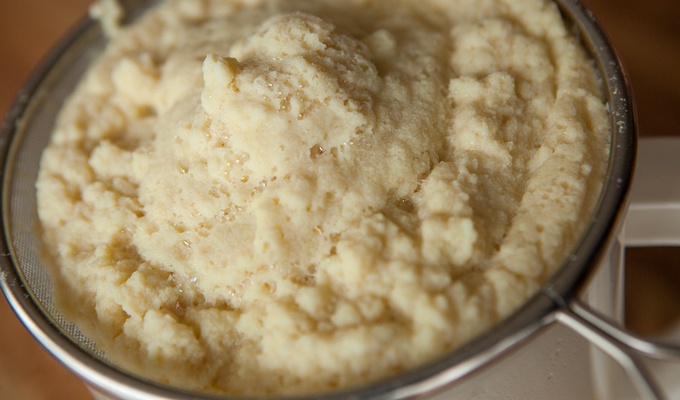Okara, soy pulp, or tofu dregs is a pulp consisting of insoluble parts of the soybean that remain after pureed soybeans are filtered in the production of soy milk and tofu. It is generally white or yellowish in color. It is part of the traditional cuisines of Japan, Korea, and China. Since the 20th century, it has been used in the vegetarian cuisines of Western nations.
It is called dòuzhā or dòufuzhā in Chinese, okara in Japanese, and biji or kongbiji in Korean.
Okara is the oldest of three basic types of soy fiber. The other two are soy bran (finely ground soybean hulls) and soy cotyledon/isolate fiber (the fiber that remains after making isolated soy protein, also called "soy protein isolate").
